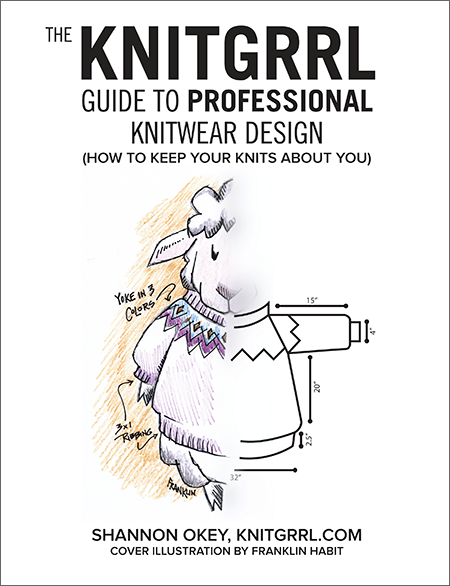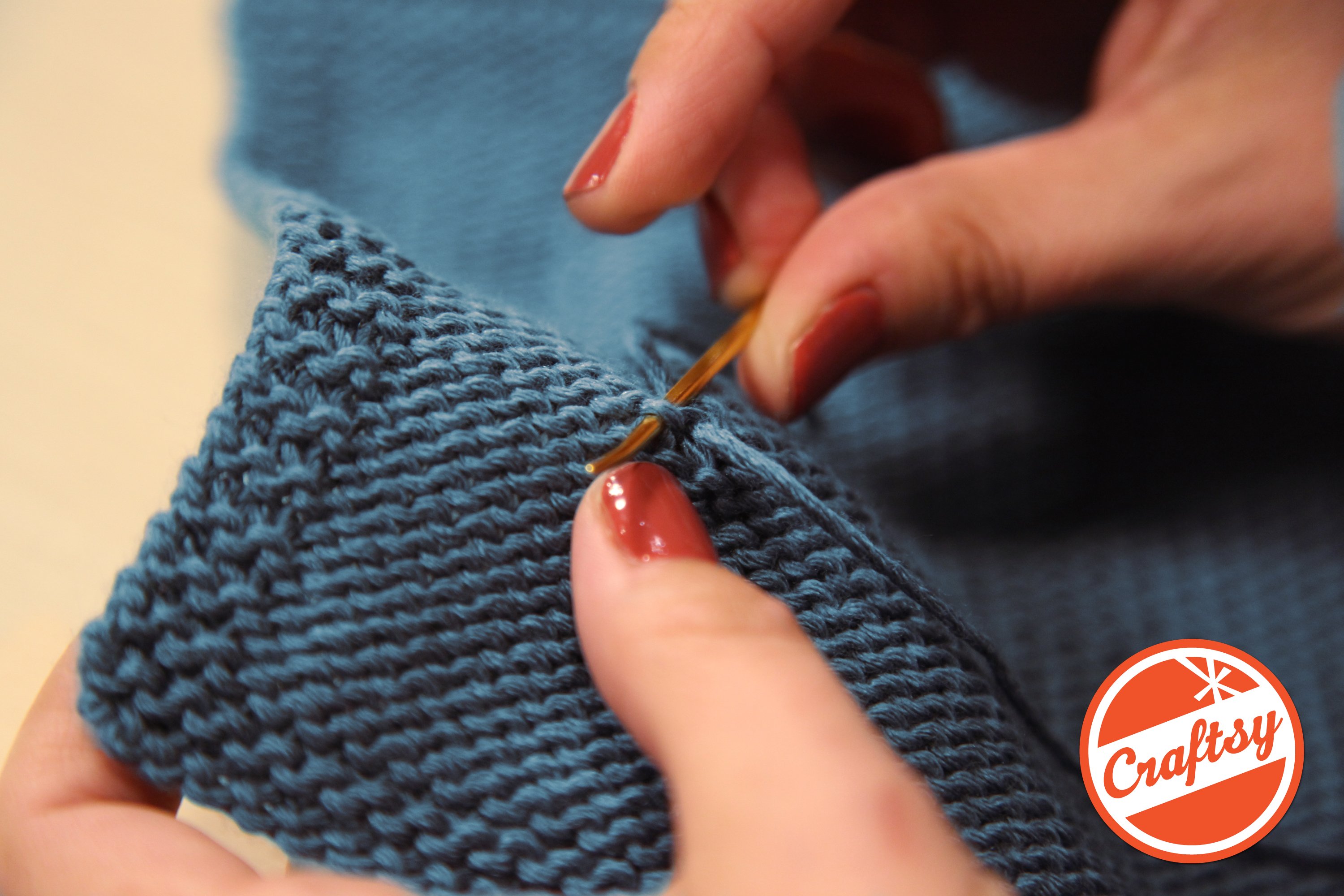This is the second in a series of interviews with smart people who are crafting a business. Part friendly chat, part case-study, all helpfulness! If you know someone I should interview (even you!) let me know.
Today I'm delighted to be talking to Shannon Okey of KnitGrrl.com. and Cooperative Press. Designer, author, publisher, editor; Shannon has done it all in the knit-publishing world and generously shares her expertise in her recently released book, KnitGrrl's Guide to Professional Knitwear Design.

Shannon, let's start with how you got into publishing?
I set up my publishing company a few years ago because I had big plans for my own projects, but the first book we actually published was Purls Forever, by the owner of South West Trading Company, whose yarns I really loved. She was getting barraged by publishers who wanted to work with her, yet didn't want to include what she thought made her book idea so unique and valuable. It's that whole “water it down to appeal to a broader audience” conundrum… yes, you MIGHT appeal to more potential readers, but there are so many overly-general books out there already.
I want specificity and personality! I suppose those two things are what have really driven my move into independent publishing.
(Note I say “independent” and not “self” publishing, because my company Cooperative Press is not just doing books by yours truly).
Do you suggest new knitwear designers go the self-publishing route first or build a reputation through other publishers?
I think these days they might not have a choice! The economy has driven many larger publishers to scale back, and it isn't as easy to get a contract as it once was. I know that there's an argument to be made for the PR value of having a big company behind you, but after the initial release, you're pretty much on your own and it either sells or it doesn't. If you're the one in charge of making sure people know about the book (through good social media use, getting out there to events, etc), you're personally invested, and you're more likely to do a good job of it.
Don't get me wrong, you need to allocate a decent amount of time to marketing, but you'd be doing much of the same even if a big publisher put out your book. I'm not going to be quiet about my book on Twitter and Facebook and Ravelry or whatever just because Big Publisher X's PR people are out there promoting it, too.
What about writers?
The craft niche is a unique one — we have a fairly small circle of places for people to find out about things. Print knit magazines, Ravelry, Knitty, the popular knitblogs, etc. If you're a novelist, it's going to be a little more difficult, unless you are already well known or unless you have a very very very specific audience you can target. (See: Debbie Macomber and her knit-related books).
However, it really boils down to quality — if your work is good, and people like it, word will get around! Give them tools to recommend your book to other people, whether it's offering up a sample chapter they can send to their friends (with ordering info at the end, of course! think Kindle and how they offer samples of their books), or planning an interesting online event, or…?
So which comes first: building an audience or self-publishing?
It definitely helps to have SOME kind of audience going in, but as I said, if your work is good and you help people to spread the word on your behalf, you'll GET an audience.
Is this changing as the industry (both yarn industry and publishing industry) changes?
I think so. I think people are more willing to purchase independently-published work now than they once were, and I think that pattern PDFs had a lot to do with it! The convenience coupled with the large selection of items available online (thousands upon thousands more patterns than you could buy in print magazines, for example) influenced purchasing behavior for hundreds of thousands of consumers around the world. I suspect that companies who don't offer digital options will see people moving to the ones who do — it's important to assess what your customers want, after all.
Why did you self-publish your latest book?
It's a topic no big publisher would touch, it's too niche-y. Despite the fact there are 5200+ people in the Designers group on Ravelry (and if every single one of them bought a PDF copy of my book, I think I'd earn more than I've made on my 12 big publisher books combined), there's this assumption that designers — and people who want to be designers — are in the minority. Spend some time on Ravelry and then tell me that's true. (Hint: it isn't).
In addition, this book (ignore the title!) holds plenty of solid information for creative professionals of all kinds, so there's an even bigger potential audience than those 5,200 people. I don't think a book needs to sell 50,000 copies in order to be a success. It's about getting the right information to the people who need it when they need it.
What have you learned from self-publishing (marketing, business skills)?
I know a lot more know about ebook file formats than I ever thought I would! The marketing skills I already had, I was just pushing them into a different direction. My new challenge has been forming the right relationships with distributors so we can get into more of the craft chain stores, etc.
Other than the scale of the project, what has been different from publishing your own patterns, to publishing a whole book?
It's much the same — you have a lot of prep work followed by doublechecking everything over ten times, staying in touch with various people (for example, all the people I interviewed in the latter half of the book), designing the layout, figuring out how to optimize the PDF version, etc!
Thanks Shannon, for answering all my questions, I've learned tons!
My favorite bits of Shannon-wisdom, that apply to ANY business:
- “I want specificity and personality!”
- “It really boils down to quality — if your work is good, and people like it, word will get around!”
- “I suspect that companies who don't offer digital options will see people moving to the ones who do — it's important to assess what your customers want, after all.”
If you are a knitwear designer who'd like some help getting published, definitely check out the book and Shannon's Get Published! class.



